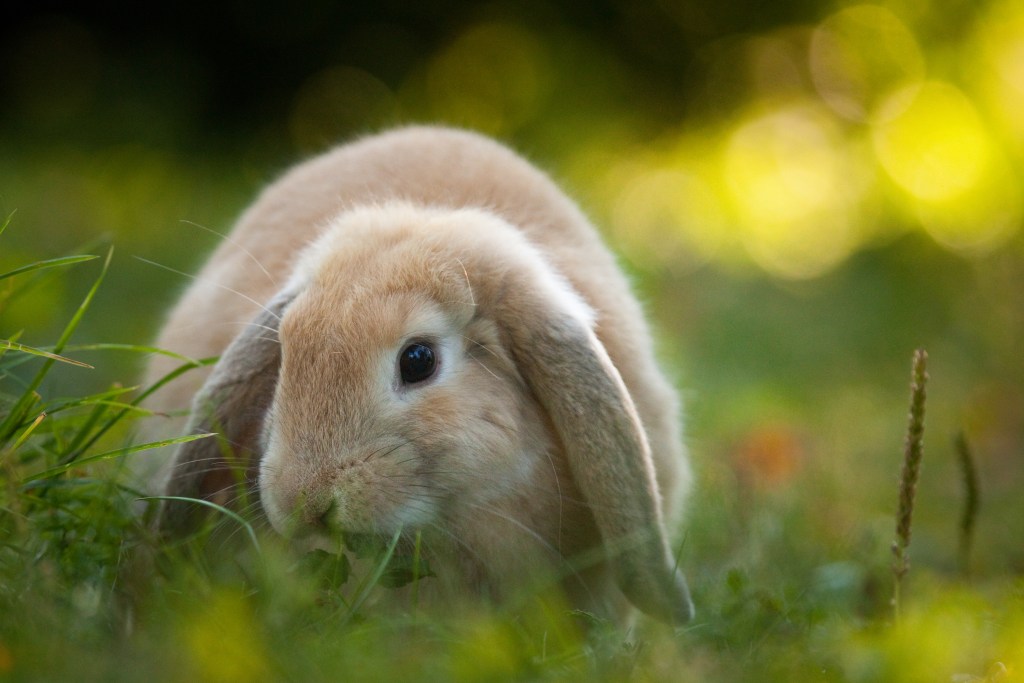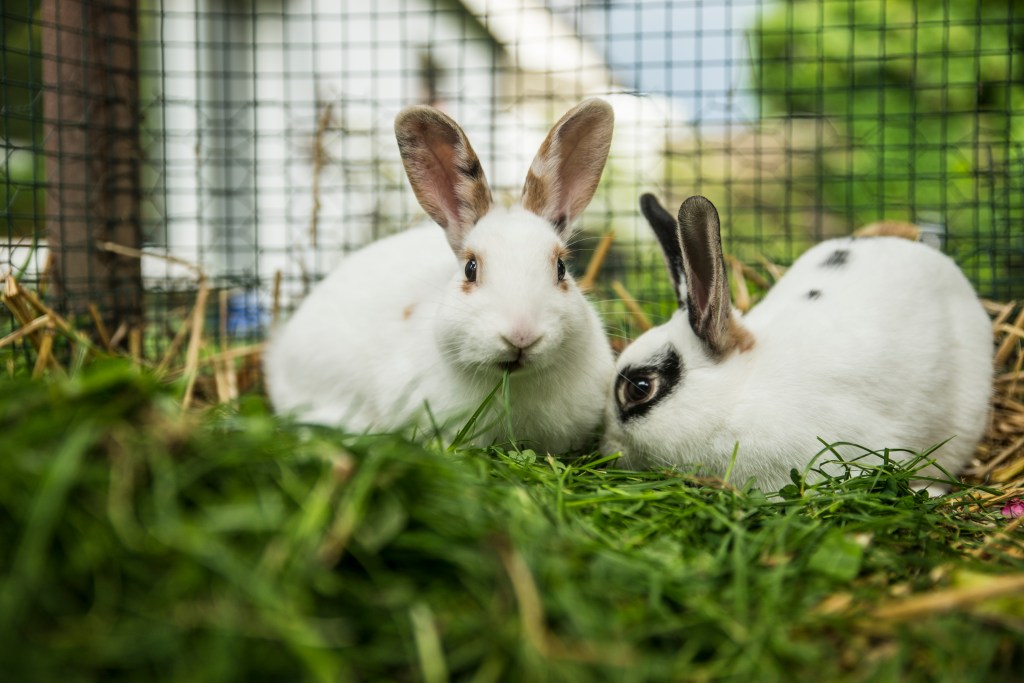Rabbits represent an interesting niche in pet ownership since they’re definitely not a dog or cat but also very different from a hamster or guinea pig. You can do fun things like walk your bunny on a leash or give them free reign of the house provided it’s thoroughly pet-proofed. And just like a pup (and some kitties), rabbits often like taking a little recess and exploring the great outdoors, with some even living there full-time. Even though their cousins spend all their lives outside, you want to protect your pet, who also doesn’t have the trained instincts of his wild ancestors and will live much longer because of the protection you offer. So you’ll want to put some time and effort into creating the perfect outdoor rabbit hutch for him to fully enjoy his playtime.

Can my rabbit live outdoors?
Yes, but with a lot of work. There’s a lot out there that can get your small pet, such as wild animals, weather, neighborhood dogs and cats, even worms and other diseases. The good news is that you can combat each one of these things with a few easy steps. First, you’ll want to put in a rabbit hutch that will keep your bunny in and everyone else out. Second, you need to talk to your vet about how to manage all the creepy crawlies that live outdoors, including fleas and ticks. Lastly, only very few climates with very specific setups can support a little guy living outside all the time, so you likely want to get your cage ready just for short excursions.
How cold can my rabbit get?
It does depend a little on factors like his species as there are short and long haired rabbits, but most can take temps down to 40 degrees occasionally. However, that doesn’t mean he wants to live that way. Most of these creatures prefer it to be in the 60s or 70s (don’t we all) so you probably want to keep their environment in that range. That doesn’t mean, however, that your happy pet can never go outside if the thermometer has dropped to the 50s. Many hutches can be insulated and actually keep their inhabitants warmer than the outside. Some owners too decide only to take the animal out for summer trips when it’s not raining but not boiling either. That works too!

What type of rabbit hutch is best?
Luckily, you have options for outdoor rabbit cages. You’ll want to determine how often you’ll bring bun-bun out before getting one, since that will help you decide whether to get a portable cage, an all weather accommodation, or an open pen.
Aivituvin Rabbit Hutch
We’re starting here because it’s a great first one to try out. Remember you can always upgrade to a permanent outdoor hutch and keep this one entirely inside if all goes well. It also has an asphalt roof to protect from rain, wheels to easily bring in and out, and a removable tray for cleaning.
Eglu Go Rabbit Hutch
For this one, you’ll set it up outside and leave there, but it comes with some additional perks because of that. For example, you can keep your buddy warm and safe in the house part and allow him to get in his steps in the bunny run with appropriate supervision if there’s predators in the region.
Rarasy Pet Playpen
Sometimes you don’t want to set up something permanent, which is where the pen comes in handy. Unlike the portable cage, you can’t leave him out in this as he should always be supervised inside the pen. But it makes a great way to throw together a housing and pop outside for a few minutes while you both soak up the sun.
Really the way to find the perfect hutch is to plan out how your rabbit will spend his outside time first so that you can find the exact right fit. You’ll also want to think about your yard and specific needs, including climate, terrain, wildlife, and background noise. Of course, it would be terrible to put everything together and then realize that a next-door-neighbor dog barks so much that your bunny is too stressed to enjoy outdoor time or the local birds of prey decide to dive bomb the enclosure. Starting with something temporary and working up to a long-term plan works great for both you and the rabbit.



